Level of difficulty: 3
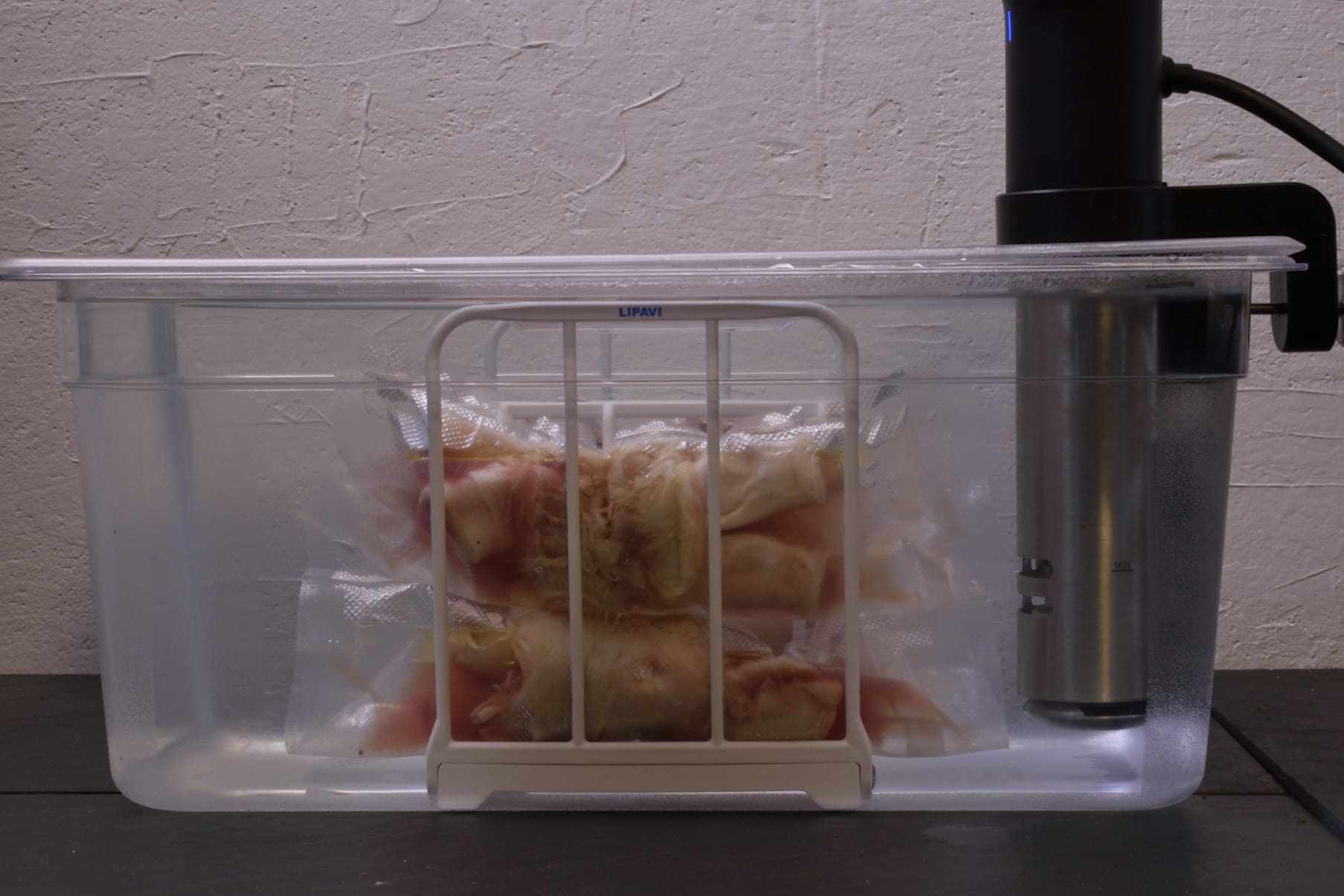
Procedure:

above: in the raw state.
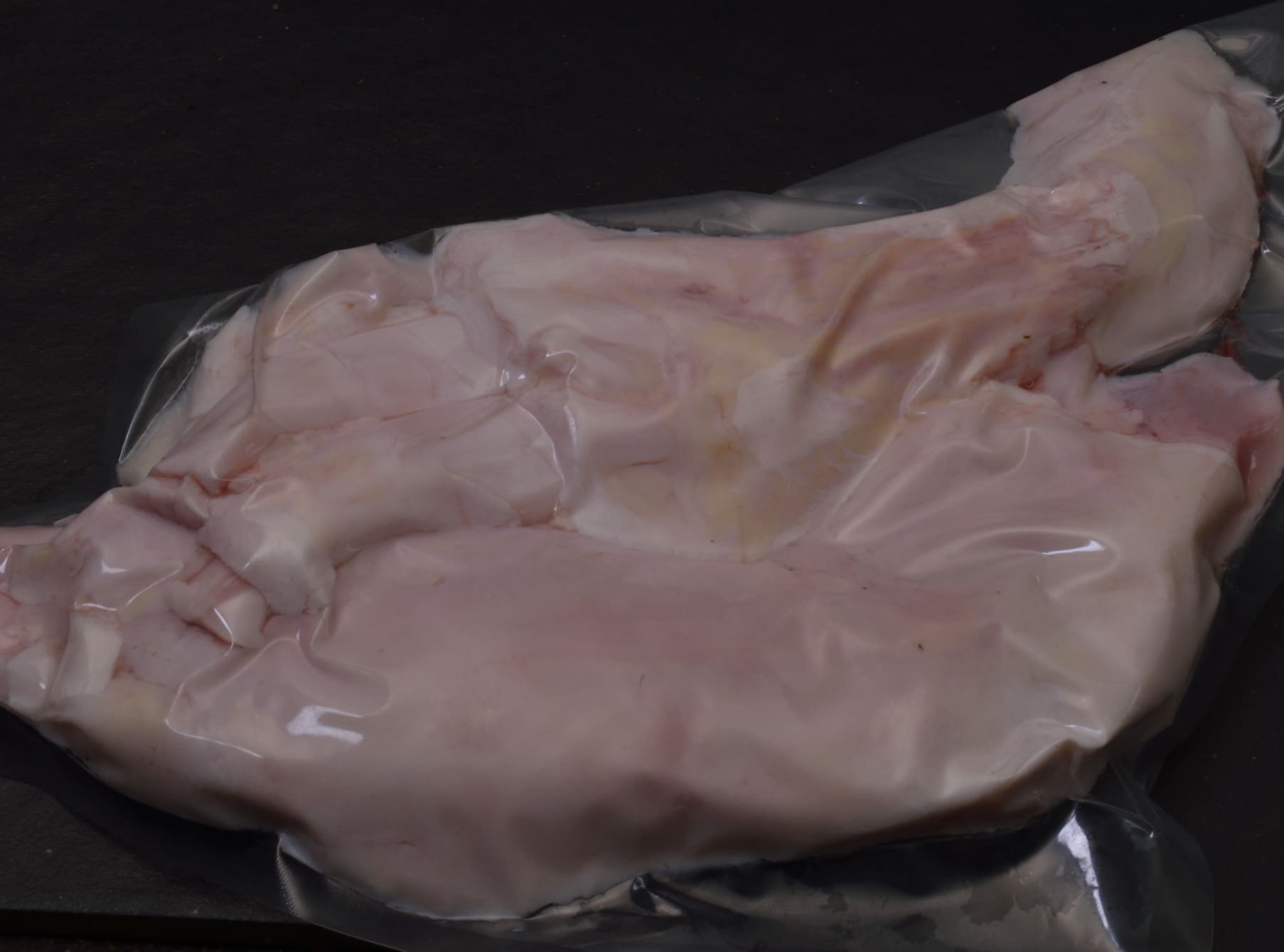
Stage the beef tendon(s) into dedicated vacuum bags. Seal and sous vide process at
150 F/66 C for 72-80 hours or until it passes the pinch test, explained HERE.
Optional: Cut open the bag, drain excess juices, but do not remove the tendon from the bag. Place the loosely bagged tendon in a container to create a uniform shape–we used a sushi roll frame, but any stiff container will suffice. Place the entire assembly into a dedicated sous vide pouch and vacuum seal again. This will create the desired shape. Return the package to the sous vide bath and process for two more hours. This will re-pasteurize the contents. Shock in iced water to 70 F/21 C and refrigerate to 40 F/4 C. In this state, the beef tendon can be kept safely refrigerated for at least two weeks.
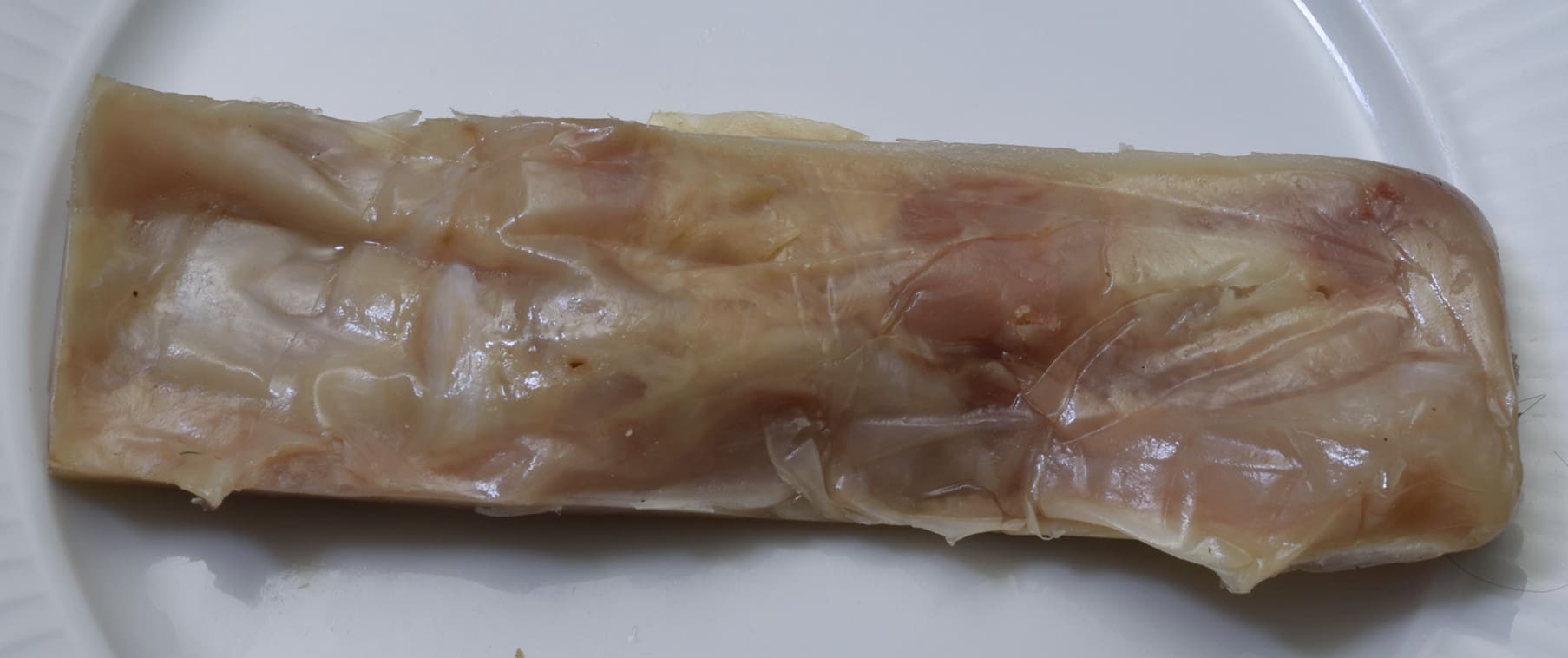
Remove the tendon from the frame/container and from the loose fitting bag.

Slice the tendon as thin as possible without sacrificing the structural integrity of the protein. A deli slicer works great for creating large slices, but this step is still commonly performed by hand. Arrange the slices on the silicone mat or non-stick sheet pan so that they do not touch each other–once they become warm, they get quite sticky.
Dry in a 170 F/77 C oven for at least 4 hours.
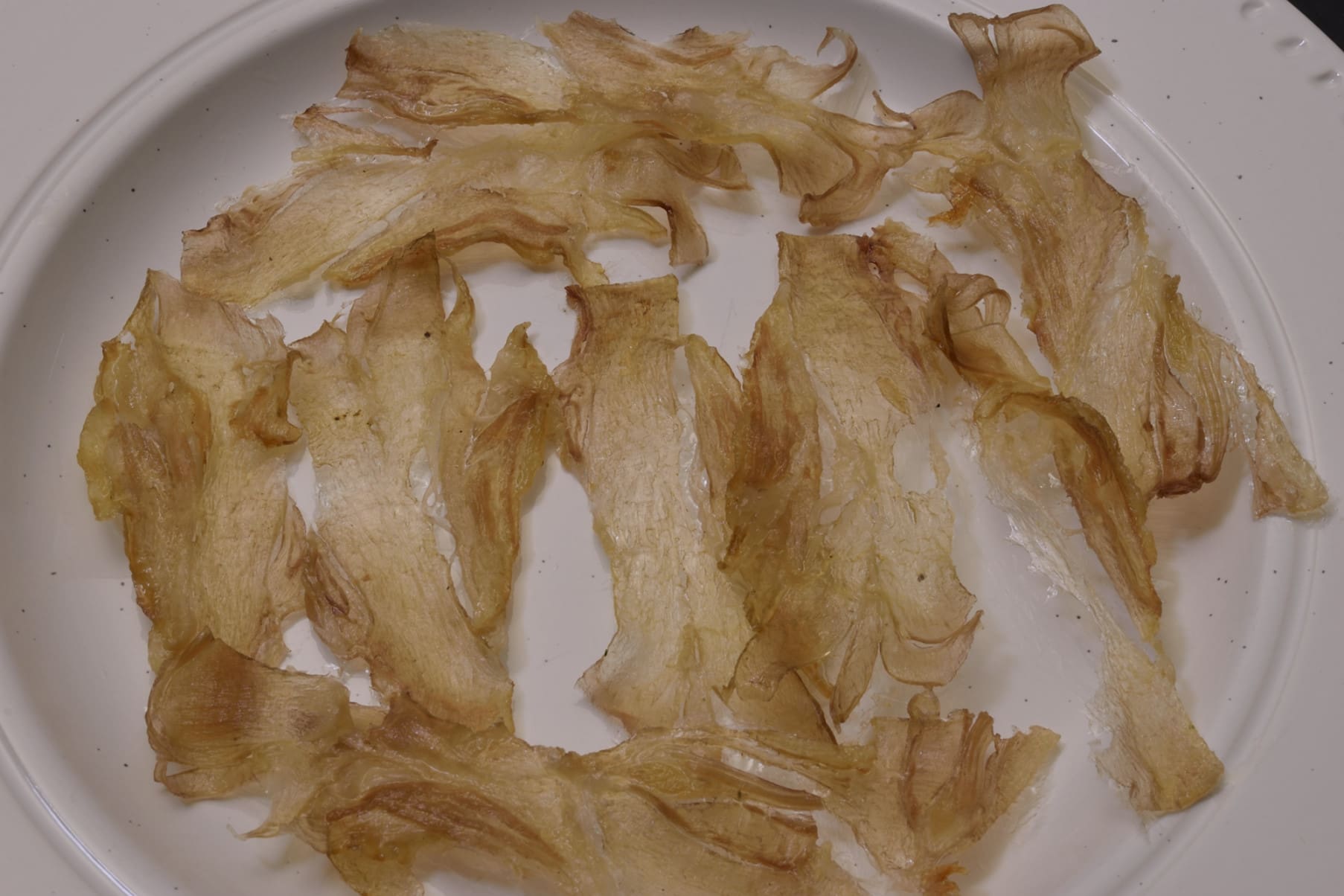
Once completely dried, the slices will look like this. They resemble cellophane in appearance and feel, with a slightly oily surface. There is very little fat in beef tendon, and the process forces it out of the tissue.
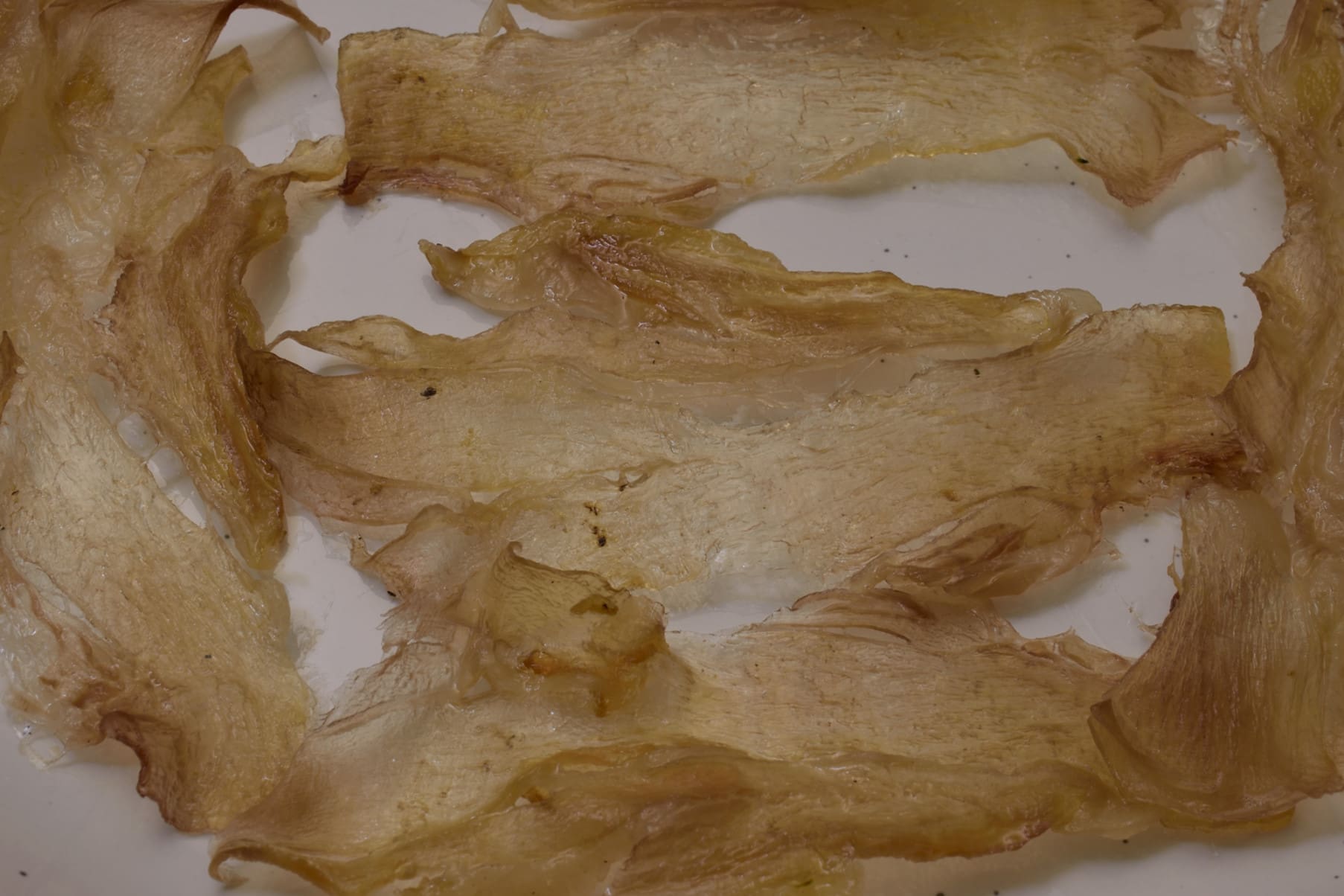
The oil in the pan should be approximately 2″/5 cm deep–the pan should be no more than half full for reasons of safety and convenience. Heat the oil to at least 350 F/176 C, to as high as 400 F/204 C. Even though traditional methods usually prescribe the higher temperature, the oil may begin to smoke somewhat. After use, it should be discarded, so I try to use as little as possible.
Wear long sleeves. Use latex gloves to carefully stage one slice of the dried tendon into the oil. The dried “chips”will cling to your skin and even a spoon or tongs. If the oil is hot enough, the chicharron will sink and then float to the top and “explode,” popping almost like popcorn. It may splatter a bit. The process takes about five seconds. If desired, flip carefully with the slotted spoon and remove immediately to paper towels. Even a few seconds too long and the chicharron will burn and taste bitter.
Service
Chicharrones are most popular as a snack, a sort of sinful pleasure like potato chips. Prepared properly, this version is extremely low in fat. There is no fat to speak of in tendon tissue, but if the oil is dirty or not hot enough, it may cling to the surface. After frying I usually return the chips to the warming oven on a paper towel for a few minutes to harvest those last few drops of oil. After that, the chips are shelf stable and will stay crisp in a sealed container for a few days. They are usually eagerly consumed long before that.
Almost any thin dip goes well with the airy, fragile chips. Honey with a pinch of hot chilis, a few drops of vinegar and a pinch of salt is a good starting point.
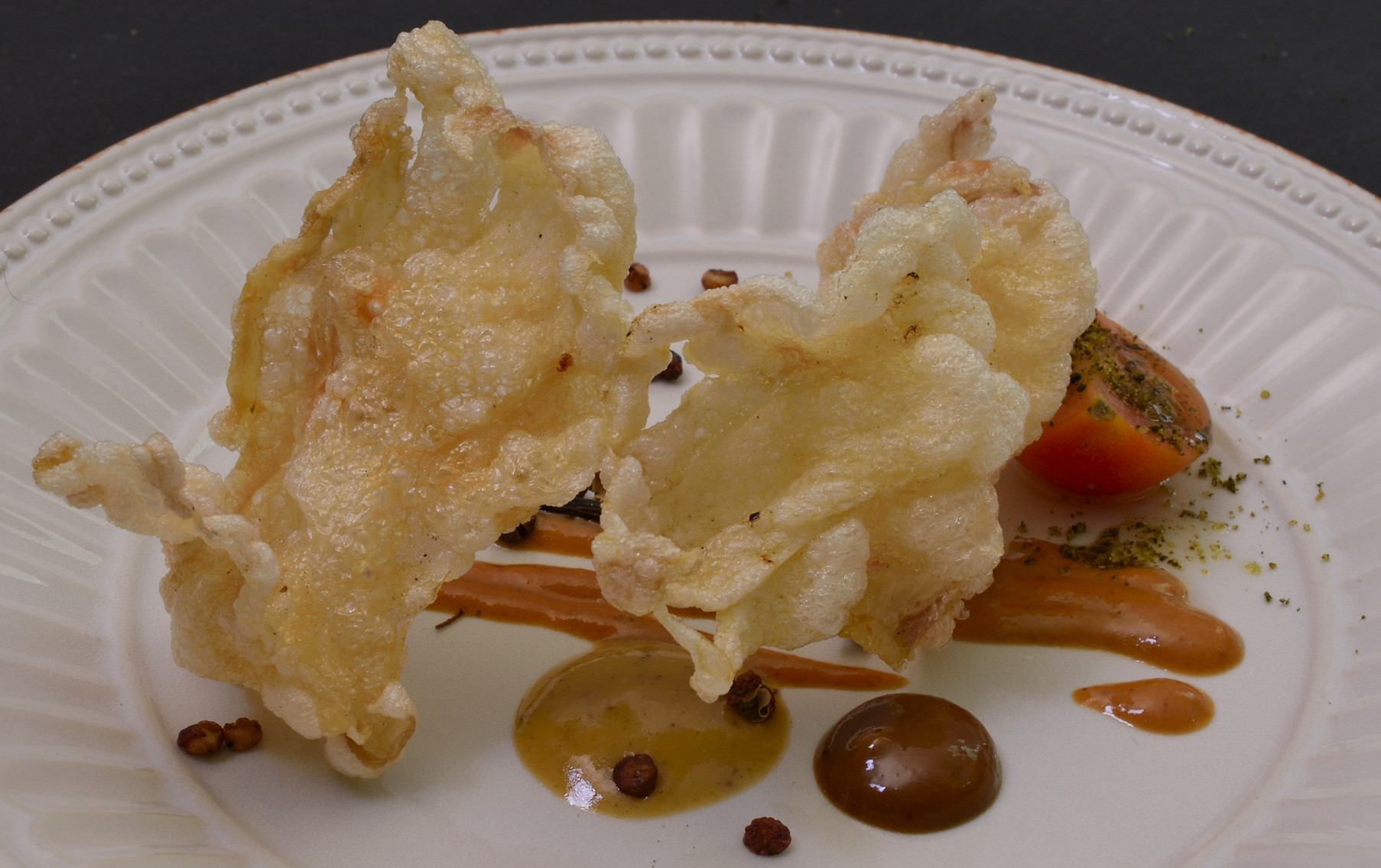
In the picture above: served with Sichuan red peppercorns and assorted tamarind sauces, linked HERE.
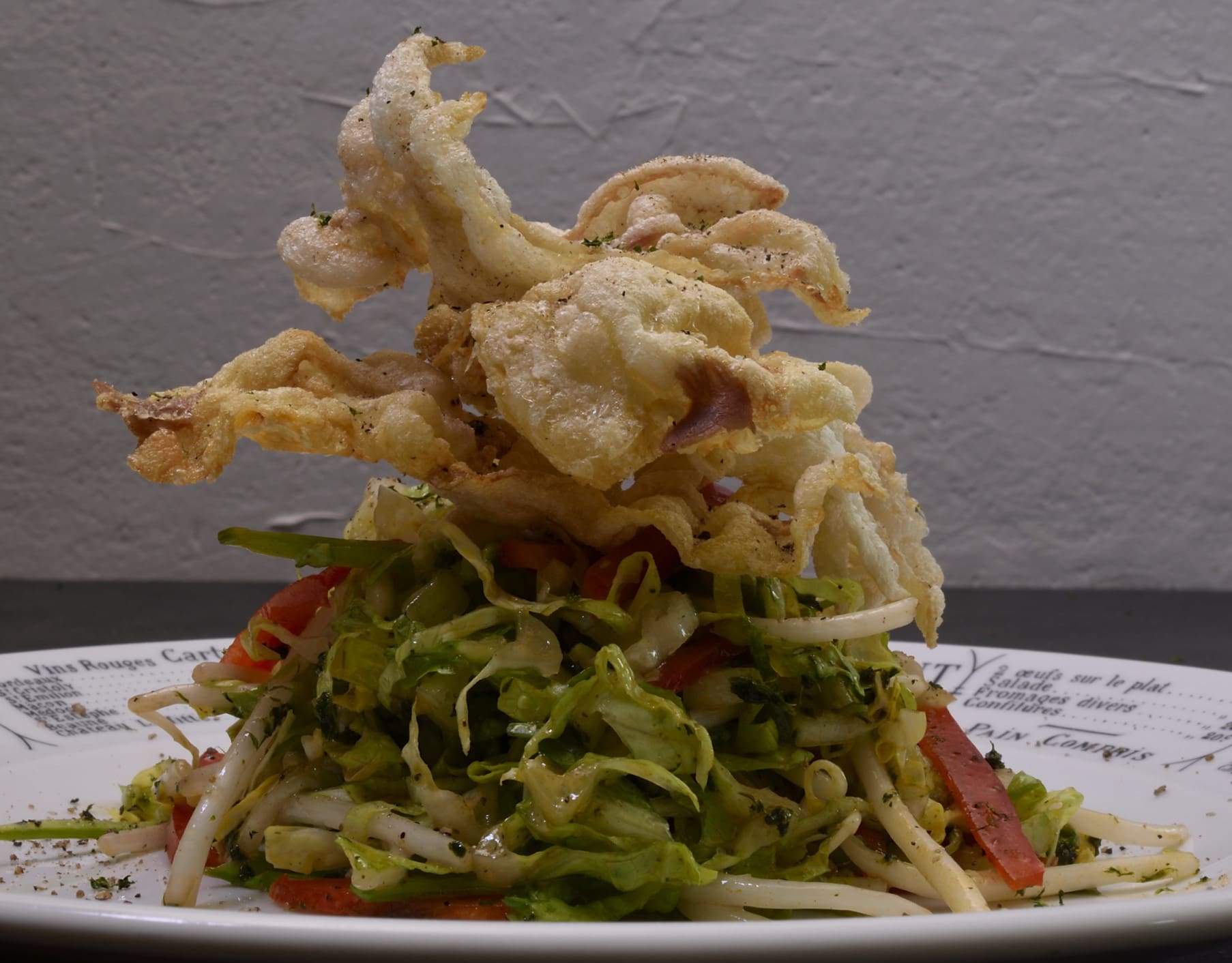
These chicharrones also provide crispness to salads as an alternative to croutons.
Bonus Sum!
After processing, the tendons can be steamed with soy, ginger, garlic and a pinch of sugar to create a dim sum inspired “tapa.”
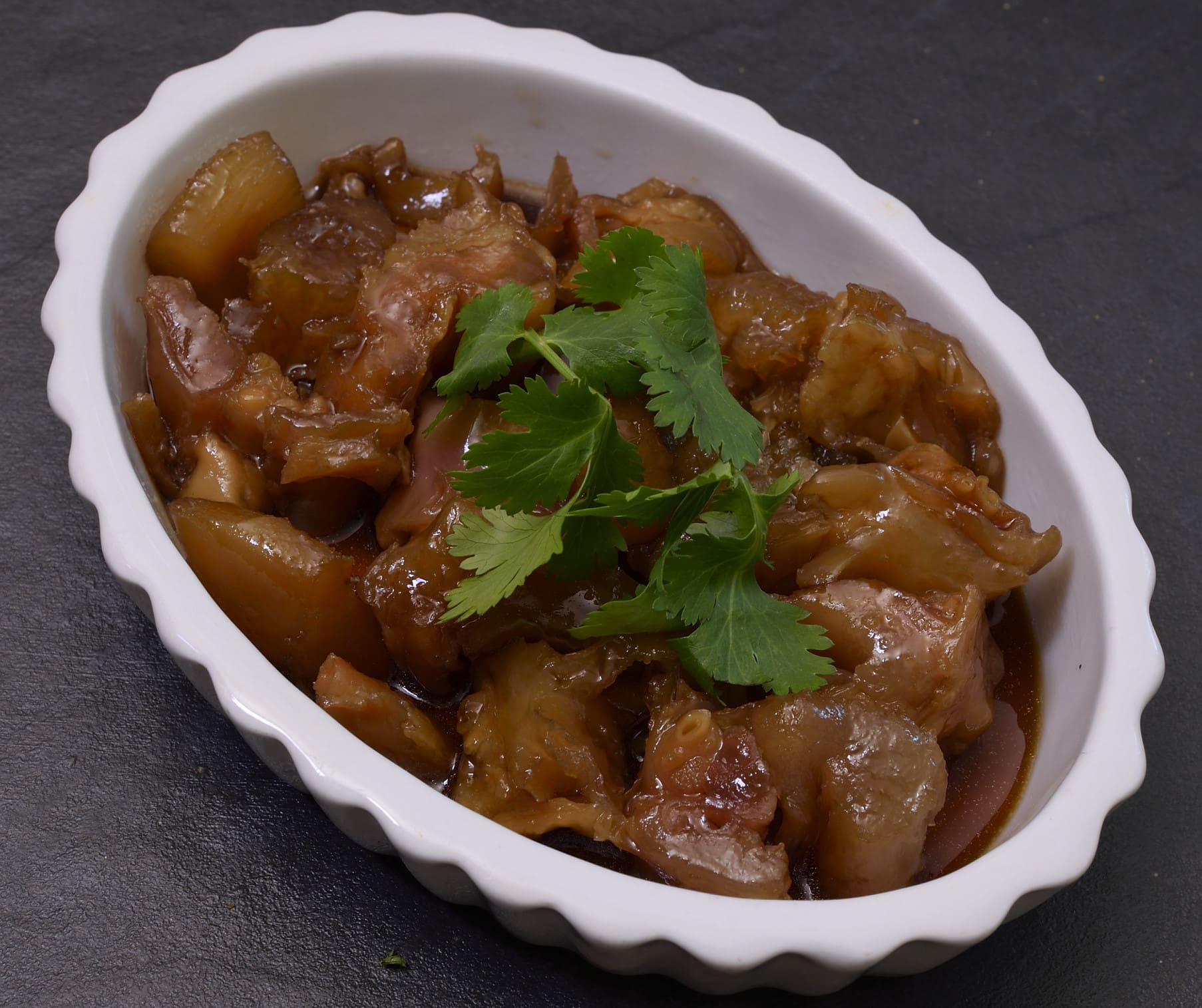
The unique gelatinous texture is unfamiliar to most Western tastes….
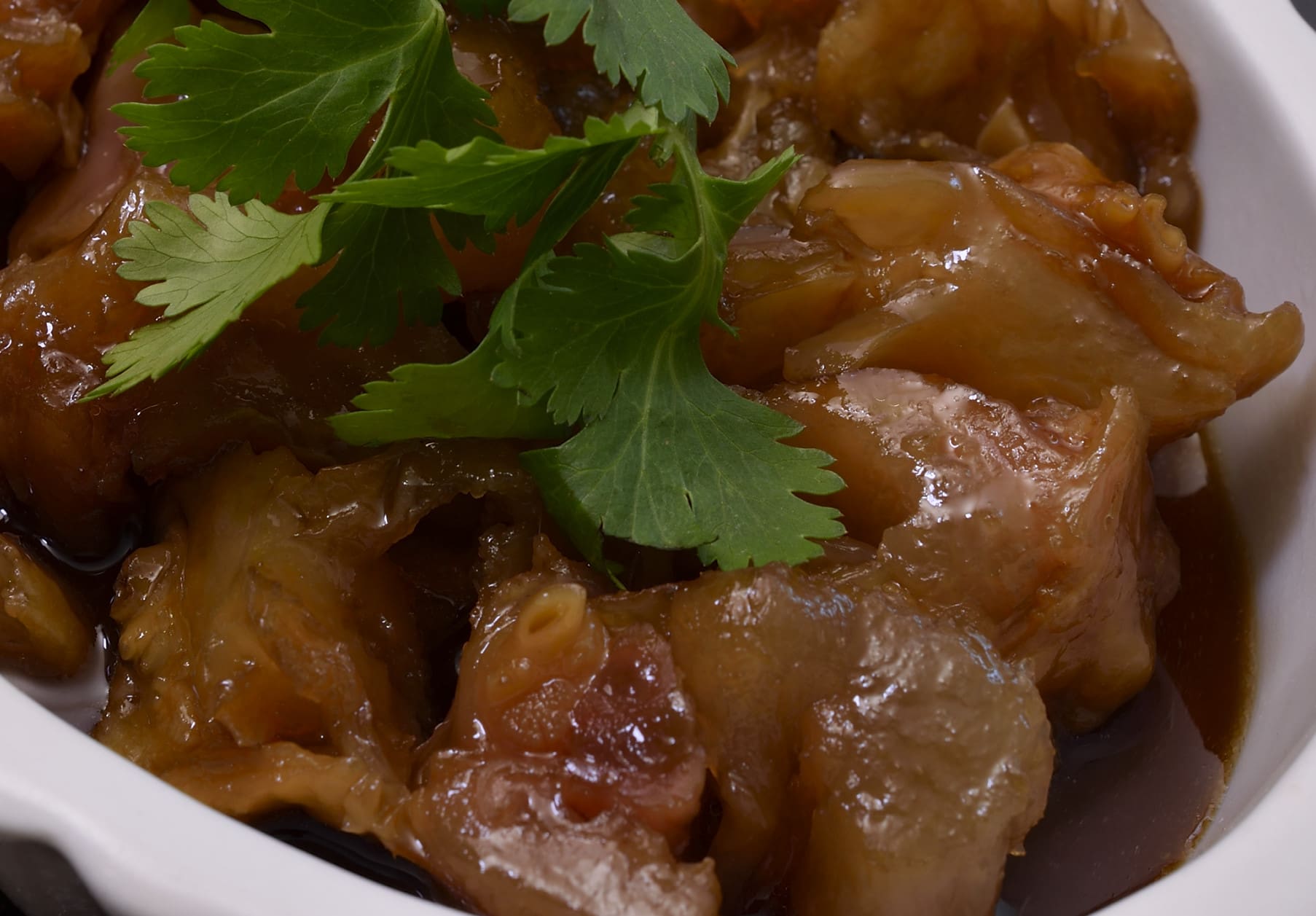
But for the adventurous among us, it is an instant gratification.
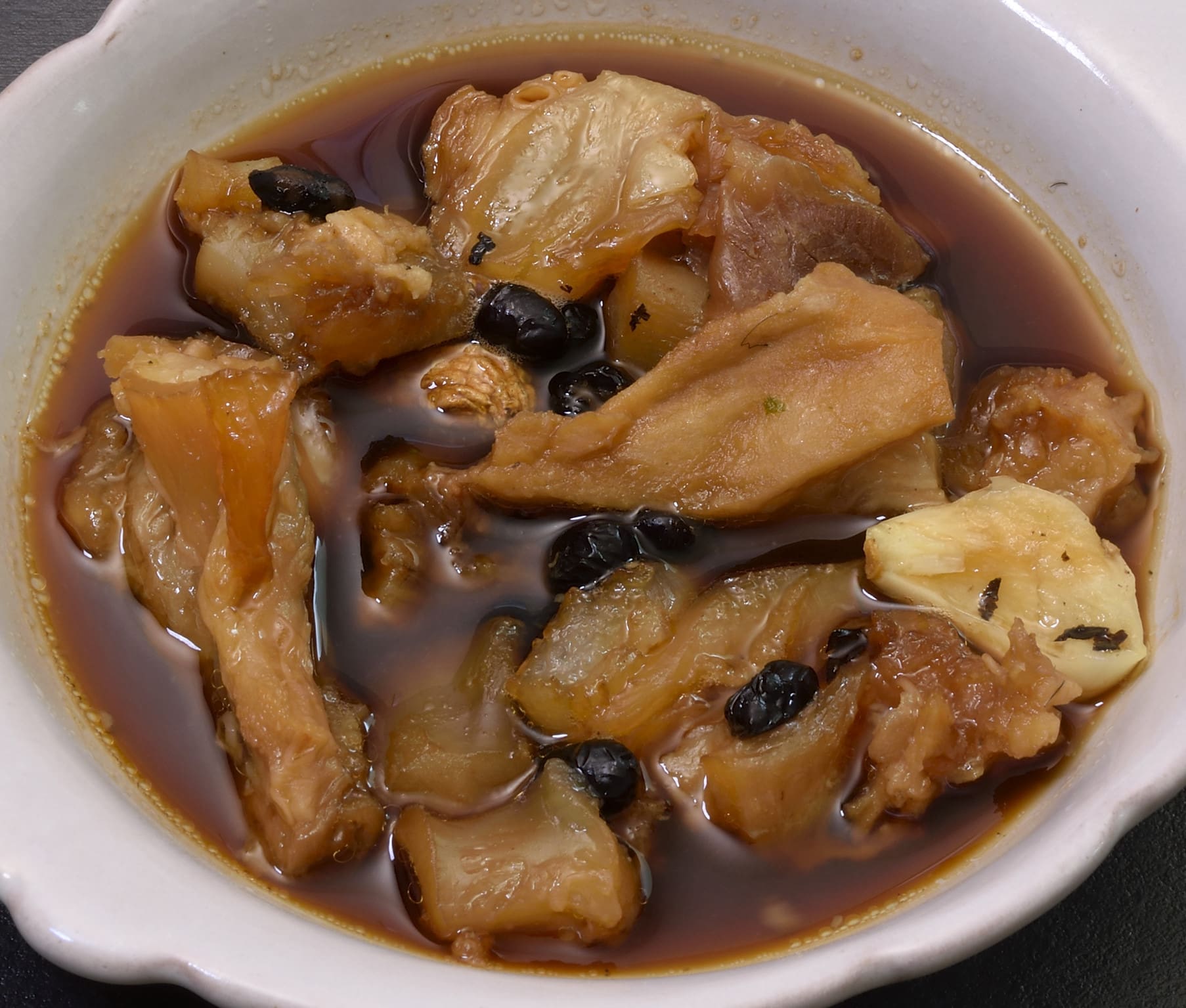
Occasionally steamed with some fermented and salted black beans.
Norm King
Gear: Lipavi C15 container, N15 polycarbonate racks. Lipavi C15L-AO lid.
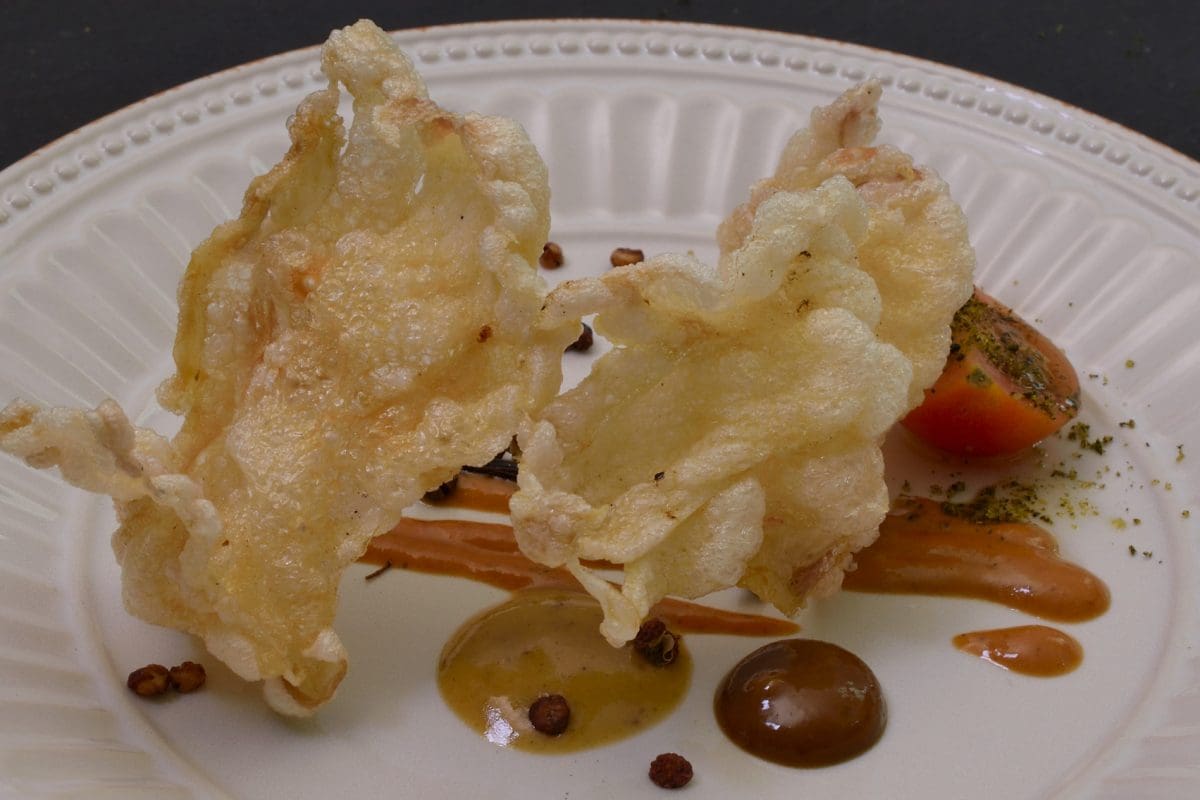
Its such as you read my mind! You seem to grasp so much about this,
such as you wrote the e book in it or something. I feel that you just can do with some p.c.
to drive the message house a bit, however instead of that, this is magnificent blog.
A great read. I will definitely be back.
Feel free to visit my blog post – vpn special coupon
Excellent post. I used to be checking constantly this blog and I am impressed!
Very useful info specially the final phase 🙂 I maintain such info much.
I used to be looking for this certain info for a very lengthy time.
Thank you and best of luck.
Here is my site – vpn coupon code 2024
Hello there! I could have sworn I’ve been to this site before but after browsing through some of the post I realized it’s
new to me. Anyways, I’m definitely delighted I found it and I’ll
be bookmarking and checking back frequently!
Also visit my site … vpn special coupon
After going over a few of the blog posts on your blog, I truly like your technique of blogging.
I saved it to my bookmark webpage list and will
be checking back in the near future. Take a look at my website as well and
let me know how you feel.
Review my web page: vpn 2024
My programmer is trying to persuade me to move to .net from PHP.
I have always disliked the idea because of the costs.
But he’s tryiong none the less. I’ve been using WordPress on several websites for about a year and am concerned about switching facebook vs eharmony to find love online another platform.
I have heard great things about blogengine.net. Is there a way
I can transfer all my wordpress posts into it?
Any help would be greatly appreciated!